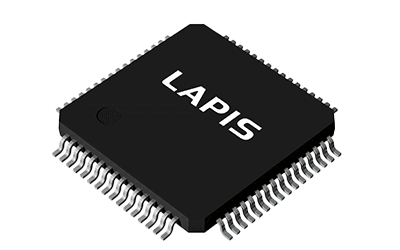What Is an 8-bit Microcontroller?

An 8-bit microcontroller is a type of microcontroller with a processing bit width limited to 8 bits.
One feature is that outputs can be programmed for a certain input. It is not suitable for high-speed communication, because its processing capability is lower than that of other microcontrollers in general use.
However, it has sufficient performance for very simple programmed operations such as simple lighting on/off. In addition, since they are widely distributed in the market, they are easy to obtain and inexpensive, so they are still used in many familiar electronic devices.
Uses of 8-bit Microcontrollers
8-bit microcontrollers are used to express simple operations inexpensively and easily because of their 8-bit processing bit width. For this reason, countless 8-bit microcontrollers are built into many electronic devices on the market.
For example, 8-bit microcontrollers in refrigerators are responsible for keeping the inside of the refrigerator at a constant temperature and turning on/off the lights when the door is opened/closed. A rice cooker is used to start cooking rice when a switch is pressed and to activate the reserved timer function when it is set.
Principle of 8-bit Microcontrollers
The contents of a microcontroller can be broadly divided into an input section, a processing section, and an output section. The input section receives on/off signals from external switches and other devices. Upon receiving the input, the microcontroller performs processing according to the input signal and outputs the appropriate output.
The advantage of a microcontroller is that the contents of this processing section can be viewed as software and changed later. In a circuit built without a microcontroller, if the data processing part is changed, it is necessary to change the circuit on the actual board. On the other hand, with a microcontroller, this can be done by rewriting the software.
Changing a complex circuit configuration requires a lot of time and effort. However, by having the microcontroller perform conditional branching based on input signals in advance, it can easily handle a large number of board control changes later on.
In addition, the more complex the circuit configuration, the more transistors and other necessary components are required, and the larger the device tends to be. By using a microcontroller, the majority of these components can be integrated, which simultaneously reduces the size of the device.
Composition of 8-bit Microcontrollers
A microcontroller consists of I/O, CPU, ROM, RAM, and peripheral circuit components.
1. I/O
A microcontroller exchanges signals between various external circuits and devices. The most basic mechanism is called general-purpose I/O or GPIO (General Purpose I/O). General-purpose I/O refers to the input/output pins of the microcontroller.
2. CPU
CPU stands for Central Processing Unit. It is a device that executes instructions in a microcontroller. One of the major differences between a personal computer and a microcontroller is the processing power of the CPU. A microcontroller executes fewer instructions per unit of time than a PC.
On the other hand, the advantages of CPUs in microcomputers include low cost and low power consumption.
3. ROM
ROM (Read Only Memory) is referred to as non-volatile memory and has the property of retaining stored data even when the power supply is turned off.
4. RAM
Random Access Memory (RAM) is a read/write memory that stores temporary data such as the results of CPU calculations.
Other Information on 8-bit Microcontrollers
Advantages of 8-bit Microcontrollers
There are many high-performance microcomputers available today. For high-speed and large-volume processing, 32-bit microcontrollers and 64-bit microcontrollers are by far the most capable, and 8-bit microcontrollers cannot compete with them.
Even so, 8-bit microcontrollers are still used because they do not require more complex control logic than necessary when the minimum amount of operation and display control is needed based on information from a small number of sensors and switches. The result is that using 8-bit microcontrollers, which are simple to handle and inexpensive, is more cost-effective.
In the case of a system with multiple functions, there are many cases where multiple microcontrollers are equipped in one system, such as selecting a 32-bit microcontroller for control of video, communication, and other functions, and using 8-bit microcontrollers for other basic operations.